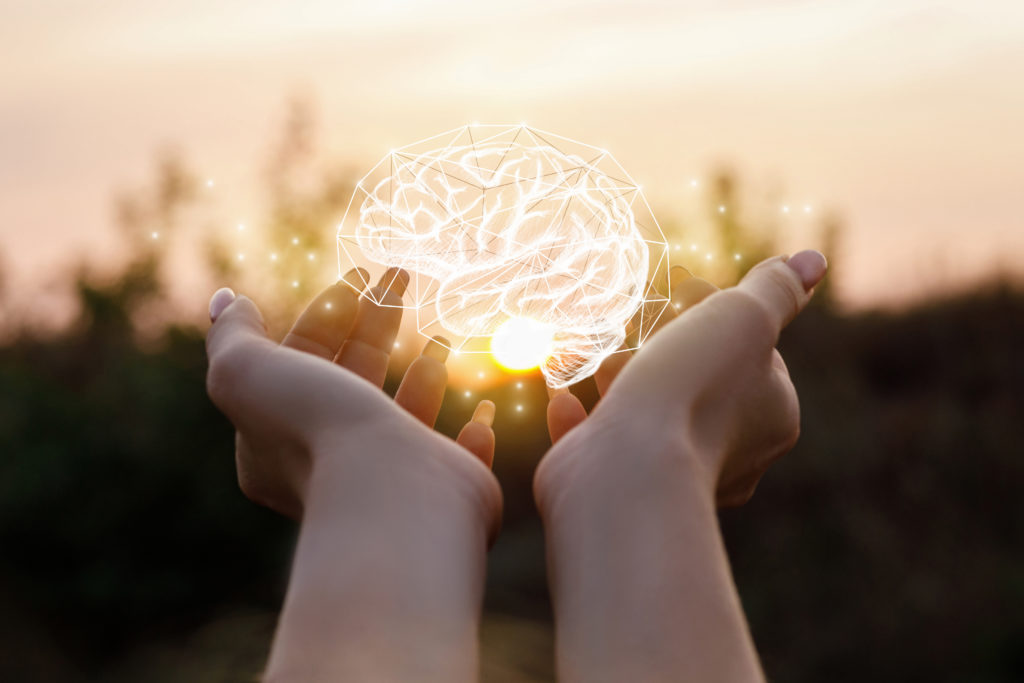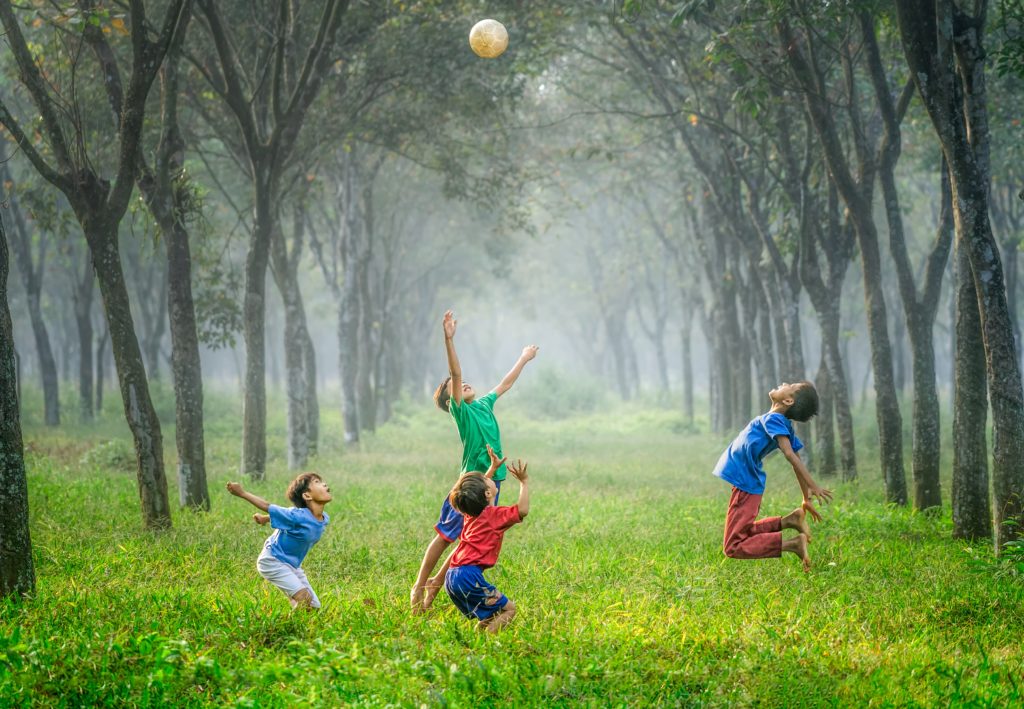Imagine a child. You can feel the energy, right? Their run-around-the-house loudness, their speed, their desire to touch and experience EVERYTHING! Kids love to move, and they move their bodies because it feels good, not because they must.
But when kids move, it does far more than just “tire them out” – although if you’re a parent, that may very well be one of your top priorities! After all, their battery can only last so long, right? Right?
But aside from expending some of that extra energy, getting children to move can also be transformational to their brain function. And if you’re a parent, the only thing more valuable than having a down-cycled, calm, and happy child, is a smart and successful one.
A Focus Game-Changer
Age aside, when we move our bodies our brains release a myriad of chemicals and hormones.
One of the most fascinating and affective in my opinion, is what’s called brain-derived neurotrophic factor, or BDNF. It stimulates the dorsolateral prefrontal cortices, which is part of our prefrontal cortex (PFC), also known as our brain’s decision-maker.
That specific part of our brain is the one heavily responsible for focus, concentration, executive decisions, planning, and organizing. All good things for a tiny human.
BDNF is one of the most powerful and important chemicals unleashed when we exercise. It allows for sustainable, long-term brain heath as it allows for neurons to make new connections, repair nerve cells that have been damaged, helps with memory function, and, most specifically, improves function and preservation of the hippocampus. Although a child’s prefrontal cortex is not fully developed until about age 25, cultivating a culture of movement in which it is seen as pleasurable is a priceless gift to your growing child.
Although BDNF is not a burst of instant gratification, it’s a long-term player, helping with brain protection, reparation, plasticity, and preservation of cognitive function.
This process of increased neuron production, or neurogenesis, creates more opportunities for synapses — connections between cells. As we age, those synapses are pared down to improve optimization and specialization. With the increased number of neurons, we think better because our capacity to make connections is literally improved.

Also helpful is that the cocktail of chemicals and hormones released when we move act like an espresso for your PFC.
While you may be grimacing as you think about your small child holding a mug of joe – don’t worry. Rather than the chaotic espresso jolt you’re thinking of, it gives it an elegant burst of “Let’s get down to business” energy. Additionally, studies have found that movement had the same impact on the PFC as Ritalin, which also releases hippocampal BDNF. Wild, right?
If you or your child are on medication for ADD, you should always consult with your health care team before making any changes. But, if you are looking for an additional protocol for a child that has been diagnosed with ADHD that does NOT involve medication and may assist in focus, exercise is a fantastic and effective place to start!
Set Them (and Yourself!) Up For Success
But kiddos and those with ADD aren’t the only ones who benefit from this consistent movement. Researchers at the University of Illinois conducted a study prescribing a brisk walk three times a week for 120 adults.
The researchers took a brain scan before and after, measuring the participant’s hippocampi, the part of the brain that decides what comes into working memory and what doesn’t.
This part of our brain naturally shrinks as we get older, which is partially why forgetting things is “part of old age.”

For these participants, their hippocampus not only stopped shrinking, but rather got a bit bigger. The participants even did a little better on memory tests.
Now, memory is a complex thing, and there are a myriad of elements at play including a genetic marker for Alzheimer’s (apolipoprotein A or APOE), diet, sleep, drugs, stress, and physical activity. <<Need to add something here that the previous statement qualifies.>>
Overall, movement activates and “turns on” the brain. Many children and teens sit for long periods of time. When you get them moving, they become more aware of their behaviors, more engaged in what they are working on, and have higher-level brain functioning when they are working!
The Cocktail of Brain-Boosters You Get From Movement
But it’s more than just BDNF at play here. When we move, our brain releases a bunch of other chemicals and hormones that are imperative to our ability to focus and optimize cognition— something that is particularly beneficial to the developing brains of children.
First, endorphins are released when we exercise, these positive chemicals function as analgesics, interacting with the receptors in your brain that reduce your perception of pain. When we exercise endorphins are released from the brain, spinal cord, and throughout the body. This is perhaps why your active children recover from boo-boos so quickly.
Second, exercise causes the release of serotonin. Serotonin is a mood booster and will increase your energy levels. Aerobic movement gives serotonin levels a boost, and many studies have shown aerobic activity to be just as powerful as antidepressants when it comes to upping this positivity elixir. Happy kids make happy parents!
Exercise also releases norepinephrine, which is a double whammy powerhouse brain chemical and hormone. This chemical and hormone allows us to become more focused and fresh. The University of Illinois found that as little as 20 minutes of exercise improves focus in kids with ADHD — and with only 20 minutes of exercise, their scoring improved dramatically.
Finally, movement releases dopamine. It’s the feel-good instant gratification chemical – also helpful in cases of focus struggles. I left it for last. See what I did there? Dopamine helps us feel GOOD, motivated, and ready to conquer the world (or at least the day). Dopamine is the reward system that keeps us coming back – so getting your kids hot on movement, will make them want more movement, rather than them feeling like it’s punishment.

The Long-Term Benefits Are The Most Valuable
Besides all the above, the greatest benefit of movement for your children is the increase in brain plasticity That the release of hormones creates. This idea of plasticity means your brain becomes more adaptable — something that scientists once believed wasn’t possible. And this malleability leads to the cultivation of new and sustainable habits and better focus.
As you can see, there are ample reasons for our children to move, and for us to join them! Yes, I know you might get a little sweaty, but with all these dramatic benefits, how much more convincing do you need to put on some comfy clothes and start moving with your kids? Besides, moving with your children is an excellent way to initiate a movement as a fun activity and way to bond, rather than resorting to more sedentary choices.
You and your children will thank you for it — and you’ll be setting both of you up for success.
